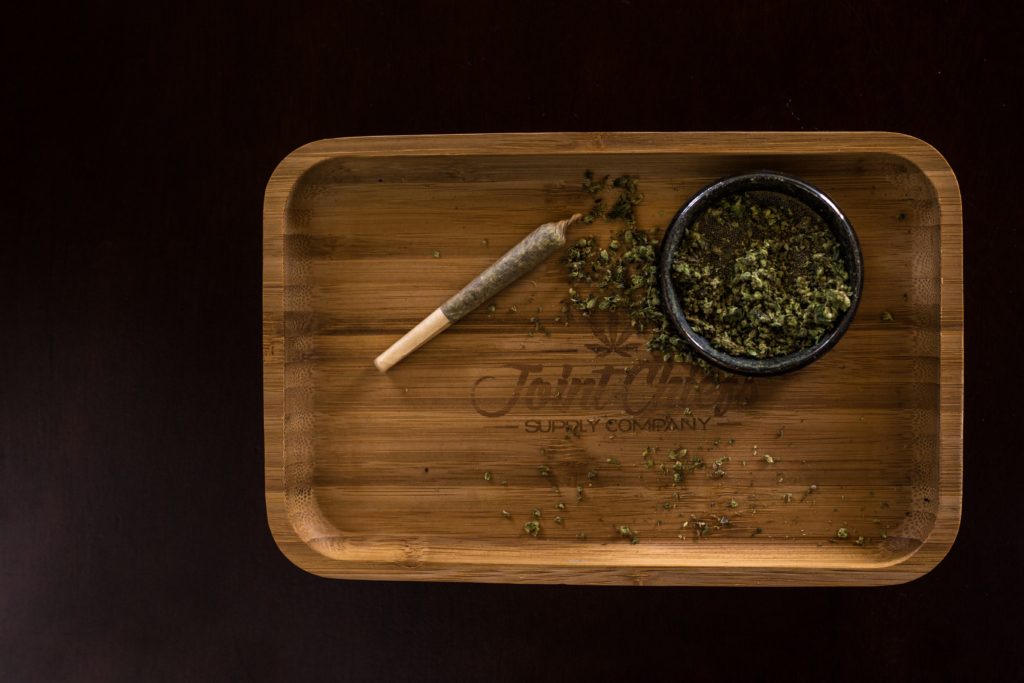“I believe that marijuana, aka cannabis should be recognized for what it is – an effective herb, grown from soil and seed, nurtured by sun and rain.”
Edward r. cook, arthritis and marijuana: How marijuana, diet, and exercise can heal arthritis

Let’s get elevated.
Cannabis, although technically still categorized as a class 1 narcotic (with supposedly “no currently accepted medical use and with a high potential for abuse”) is now scientifically proven to have medicinal properties and uses. More specifically, cannabis is proving to relieve arthritic pain. Might a joint help you? Chances are it literally can! Want to know why?
Let’s talk about the star of the show, the endocannabinoid system (ECS). The ECS is the reason why cannabis is so incredibly beneficial to us. The endocannabinoid system, although only discovered in the late ’80s, is apparently in every living thing. Our endocannabinoid system is responsible for regulating various functions within our cardiovascular, nervous, and immune systems. The ECS is found throughout our body, organs, spine, brain, and even our skin as Cannabinoid 1 (CB1) and Cannabinoid 2 (CB2) receptors.
And just for funsies, did you know that even our foods have cannabinoids? Yup, many plants, including black pepper, cloves, broccoli, and carrots have cannabinoids. Seriously, Google “do carrots have cannabinoids?”
What does it do? Well, everything! Our endocannabinoid system is responsible for helping us achieve and maintain homeostasis.
How does it help? Well if you take into account that homeostasis is the condition of optimal functioning, then cannabis can basically help us reach our optimal level, balance.
“The ECS regulates and controls many of our most critical bodily functions such as learning and memory, emotional processing, sleep, temperature control, pain control, inflammatory and immune responses, and eating. The ECS is currently at the center of renewed international research and drug development.”
as reported by harvard health publishing
I recently came across a video from the Arthritis Society. The guest was Dr. Jason McDougall, a renowned researcher, and medical cannabis expert. The topic of discussion was Medical Cannabis: What Research is Revealing | Arthritis Talks. This totally caught my eye because honestly, I have a cannabis-skeptic with arthritis in my life. So to learn of the science behind this topic specifically was awesome! I was amazed at an MRI highlighting the immediate effects of cannabidiol (CBD) on the CB1 receptors inside the arthritic knee of a mouse. Check out the video link [ skip to 44.08 minutes ] for more information on how CBD helps alter joint inflammation.
In fact, we should all take note of the emerging research surrounding cannabis and arthritis. Post-traumatic arthritis tends to show up months or years after an injury such as a fracture or dislocation. I guess I have aggressive thumb-war-fights with my brothers (looking at you George!) to blame for my arthritic thumbs.
So, what does this mean for you? Well that depends, are you open to trying something new? If so- remember, you don’t actually have to smoke a joint. You totally could, but there are plenty of other options too. Topicals can offer excellent results, without the high. They’re a great option for those not interested in the psychoactive effects or when fully medicating isn’t an option. I personally use the topical cream method on my hands (with extra emphasis on my thumbs) and it honestly works miracles for me. Everyone is different though, but cannabis can offer almost immediate relief or reduced pain in joints, depending on the consumption method. As with any new practice, always keep in mind the following:
- If you decide to try cannabis, remember to choose a product that has been independently tested for purity, potency, and safety — Plain Jane has been my online Hemp CBD spot for about 3 years now, and let me tell you they have expanded their product selection tremendously since!
- Introduce cannabis slowly to see if it helps your specific pain. It takes a little time and adjustments to see what works for you specifically.
- Try to avoid foods that cause unnecessary inflammation, and remember that gently moving your body on a daily basis can also help with pain.
- If you opt for the edible route, start low and give it at least an hour to take effect.
- Always talk to your doctor before adding cannabis to your wellness practice, as some of your current prescriptions may need to be adjusted.
At the end of the day, it’s your body. If you’re not fully satisfied with your current pain management, feel that the medication isn’t as effective as you’d hoped, or simply want a more natural approach with likely fewer side effects, then I invite you to check cannabis out. Be curious, see what others are doing, and take note of how they’re being affected. Start that conversation with yourself.
Remember, I’m not here to promise that cannabis is a miracle cure, but I sure as hell am going to share the many wonderful qualities of it with you! It may or may not be right for you specifically, and that’s totally okay too. If you have questions though, ask them! I am here for you.
As always, remember that the information provided on Mary J’s Apothecary, LLC is for educational purposes only and does not substitute for professional medical advice. Always consult a medical professional or healthcare provider if you’re seeking medical advice, diagnoses, or treatment.
Wishing you health and wellness- remember to stay elevated!
P.S. If you want to learn more join the list to stay up to date with all things cannabis!
A small commission may result from affiliate links in this article, at no additional cost to you-go take a peek, lots of awesome products!


Leave a Reply